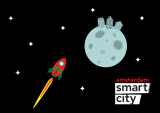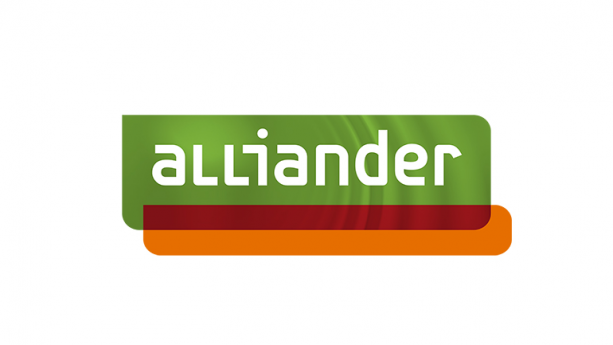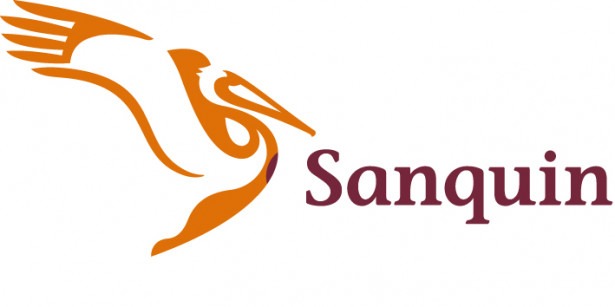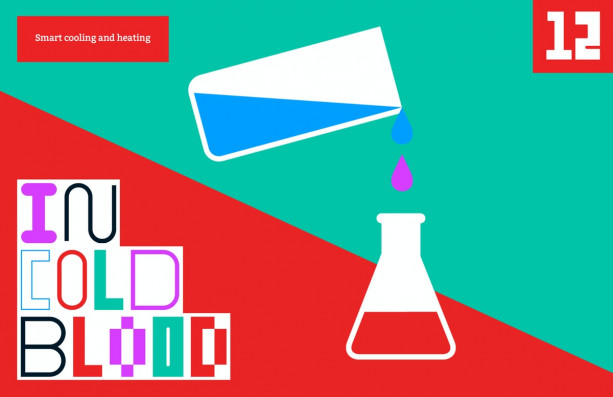Stay in the know on all smart updates of your favorite topics.
Revolutionise Recycling, Redefine Wealth: Seize the Opportunity with ByeBye Bed Limited and Reborn Products!

Greetings Trailblazing Visionaries,
Get ready for a seismic shift in sustainability! We're ByeBye Bed Limited, a force of innovation since 2019, experiencing a staggering 900% growth, and now we're inviting you to be part of our electrifying journey - Reborn Products.
The Powerhouse Behind ByeBye Bed Limited: Meet Paul Beckett, the maverick entrepreneur who saw a goldmine in recycling. His vision isn’t just about mattresses; it’s about transforming waste into a treasure trove of sustainable, retail-worthy products. The world is ready for this revolution, and we're leading the charge.
Dazzling Growth, Unstoppable Momentum: From a modest 6,000 sq. ft. to our current 60,000 sq. ft. facility, we've supersized our operation to revolutionise recycling on a grand scale. Brace yourself for a dedicated manufacturing facility that will catapult our capabilities into the stratosphere.
Reborn Products: Where Sustainability Meets Luxury: Our 'Reborn' products aren't just eco-friendly; they're a testament to style, comfort, and sustainability. From avant-garde mattresses to chic futon chairs and everything in between, we’re turning waste into opulence. Currently, 96% of our materials are recycled, making us the pinnacle of green innovation.
Crushing the Landfill Crisis: We're not just talking the talk; we're walking it, stomping on the UK landfill crisis that swallows almost 5,000,000 mattresses each year. We're not just recycling; we're redefining waste, turning it into a jaw-dropping spectacle of sustainability.
Financial Dynamo: Fueling the Future: Hold on tight because the next phase is a financial thunderstorm. We're not just enhancing the use of our recycled materials; we're rewriting the rules of industry, starting with furniture making. Imagine a world where our waste stream becomes the lifeblood of innovation.
Revolutionary Padding Material: Unleashing the Future: Introducing our game-changing padding material, birthed from our waste streams. It's not just 100% recyclable; it's a disruptor, challenging the status quo and reshaping the very fabric of eco-friendly living.
Invest in Tomorrow: ByeBye Bed Limited is the Future: This isn’t just a crowdfunding opportunity; it’s your ticket to invest in the future of sustainability. Join the movement, fuel the revolution, and be part of a success story that will be told for generations.
Social Impact: Building Lives, Breaking Chains: But wait, there's more! Our initiative with HMP isn’t just about recycling materials; it's about recycling lives. We're rehabilitating prisoners, re-skilling them for a triumphant return to society. And the best part? They potentially become integral members of our powerhouse workforce.
Your Invitation to Greatness: Investing in ByeBye Bed Limited and Reborn Products isn’t just about returns; it’s about being part of a seismic shift. This is your opportunity to be on the ground floor of something monumental.
Interested in More Details? Ignite the Revolution - Join Us Now: Email us for more details and become part of a future where recycling isn’t just responsible; it’s a lifestyle. Let's redefine waste, together.
Thank you for daring to dream big with ByeBye Bed Limited and Reborn Products.
Local energy systems challenge: How to organize collaboration and knowledge sharing for the creation of local energy systems?

The climate crisis and current energy prices are stimulating a rapid shift from gas to electricity. This shift is happening quicker than expected and therefore has caused grid congestion.
Optimization of local energy usage, production, and exchange is important for tackling grid congestion. It can also stimulate the usage of sustainable energy resources and lower the costs of energy. However, optimization requires intensive collaboration between local stakeholders. It also requires them to take the common good into account instead of their self-interest.
Properly organizing these types of collaboration on the local level is therefore very challenging. There is a need to create a (as far as possible) standard approach with best practices and collaboration between the government, grid operators and the local communities. This challenge aims to create a collaboration between people working with Lokal Energy Systems (LES), to help them share their knowledge and learnings, and to empower people who want to create a LES of their own.
Local Inclusive Future Energy (LIFE) City platform

Amsterdam Zuidoost will build a large amount of new homes in the near future. This will will demand more capacity from the electricity network. With an increasing demand the energy network either needs investments to expand the capacity of the network, or we can explore smart solutions in the field of energy management.
LIFE City Platform
Together with the expected expansions of the network, smart management of energy at area level can help prepare Amsterdam Zuidoost for the future, without unnecessary investments in the current energy grid. The LIFE platform offers users the opportunity to make choices about energy exchange or storage based on economic motivation, sustainability or to support the energy grid. Futhermore, the project ensures that the energy that is generated in Amsterdam Zuidoost - and not immediately used - can be stored locally, such as in the Johan Cruijff ArenA battery.
'Ditgital twin'
An important part of the LIFE platform is the development of a “digital twin”. This digital twin is a digital representation of the ArenApoort area, in which the relevant buildings and energy infrastructure are simulated. All kinds of experiments and adjustments can then be carried out in this digital twin, such as adjustments to electricity prices and rates and the integration of more sustainable energy generation. This allows smart area-based energy to be exchanged after the optimal mix has been calculated using measurement data and artificial intelligence.
Want to know more about this electricity grid-friendly and community inclusive innovation to contribute to the energy transition? Visit our website>>
Energy Lab Zuidoost

Amsterdam Zuidoost aims to be energy neutral by 2040. To reach this goal, significant steps need to be taken. Not only do we need new technologies, there is also a need for smart ways to organize the transition, and for adaptations to our lifestyle. This requires cooperation among many different parties. Both from the government and residents, as well as from companies and researchers. Energy Lab Zuidoost brings these parties together.
Energy Lab Zuidoost
The Energy Lab Zuidoost is an initiative of the AMS Institute, the City of Amsterdam and the Urban Energy Institute of TU Delft. By experimenting together in different ‘Living Labs’, they develop and test new innovations in a real-life environment. This helps understand what works and how to scale and implement these innovations in Amsterdam Zuidoost and other metropolitan environments.
The Energy Lab Zuidoost ensures the exchange of knowledge between different projects, organizations and disciplines. It connects scientific expertise to the urban challenges in Zuidoost and brings together academics from various disciplines. The ambition is to share the knowledge, so the innovations can be applied throughout Amsterdam and beyond.
Energy Lab Zuidoost focuses on three main topics around which they develop pilots and experiments:
- The sustainable renovation of homes
- Low temperature heat networks
- Local smart energy systems
For more info see the full animation about Enegry Lab Zuidoost (Dutch with English subtitles) on the AMS website >>
Wicked Problems
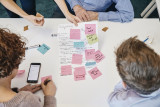
Te wicked? Niet voor ons.
Wij werken allemaal aan urgente, complexe, maatschappelijke uitdagingen. Issues die schier onoplosbaar lijken, van dilemma’s en paradoxen omgeven, nog niet duidelijk hoe het moet. Wel is duidelijk dát het moet, dat we elkaar nodig
hebben en dat we er NU aan moeten beginnen. Om met de woorden van Jan Rotmans te spreken; we leven niet in een tijdperk van verandering maar in een verandering van tijdperk. En hier hoort een nieuwe gereedschapskist bij.
En of je nou aan energietransitie werkt, andere mobiliteitssystemen, creëren van waterstofhubs, peer to peer autodeelsystemen, het maakt niet uit, we zien dat al deze opgaven op enig moment tegen gelijksoortige barrières aanlopen. Op samenwerking, financiering, privacy, onvoldoende aansluiting op de maatschappij, om maar een paar voorbeelden te noemen.
Unieke samenwerking
Als Amsterdam Smart City netwerk willen en kunnen we deze opgaven niet laten liggen. Door het bundelen van onze kennis en expertise kunnen we als netwerk iets unieks bieden en de wil en durf tonen om deze barrières te doorbreken. De betrokken partners die dit uitdenken en begeleiden zijn RHDHV, Kennisland, Drift, NEMO, Arcadis, Alliander, HvA en Metabolic. Zij bundelen hun expertise en ervaring om de echte vragen boven tafel te krijgen, tot nieuwe manieren van samenwerken te komen en barrières te doorbreken. We richten ons met name op de start van de samenwerking. Gezamenlijk ontwikkelen we een ‘wicked problem aanpak’. Op een nieuwe manier, lerend door te doen, exploratief.
Waar moet je aan denken?
Wat is eigenlijk het echte probleem? Wiens probleem is dit? Hoe kijken anderen er tegenaan? Welke andere partijen lijken nodig? Hoe vind je ze? Hoe ga je om met eigenaarschap en botsende frames? Hoe zorg je dat je al in
een vroeg stadium de maatschappij (bewoners, ondernemers, werknemers, etc) betrekt en hun ervaringen in het project trekt? Het wicked problem team zet nieuwe methoden in voor het beantwoorden van deze vragen. En het creëren van de benodigde commitment om het vraagstuk aan te pakken. Niets staat van te voren vast, want we passen ons aan aan wat we tegenkomen. Met elkaar ontwikkelen we een nieuwe aanpak om de barrières te doorbreken.
De energietransitie uitgelegd

De energietransitie is een van de belangrijkste maatschappelijke thema’s van dit moment en van de komende jaren. Maar wat ís de energietransitie? En wat zijn de specifieke doelen? Wat is het verschil tussen ‘energieneutraal’, ‘klimaatneutraal’ en ‘CO₂-neutraal’? Welke rol kan waterstof (niet) gaan spelen in de gebouwde omgeving van de toekomst? En hoe zitten ons huidige energieverbruik en energiesysteem in elkaar? Deze en andere vragen worden beantwoord in het boek ‘De energietransitie uitgelegd’. Ook komt aan de orde waar de uitdagingen liggen voor de energietransitie en hoe het energiesysteem er in 2050 ongeveer uit zal zien.
‘De energietransitie uitgelegd’ biedt alle basiskennis die nodig is om het nieuws omtrent de energietransitie kritisch te kunnen volgen en een gefundeerde mening te vormen in discussies over dit thema. Er is geen specifieke voorkennis nodig om het boek te kunnen lezen, maar het gaat op bepaalde onderwerpen wel diep in. Hierdoor is het boek interessant voor zowel energie-professionals als geïnteresseerde leken.
Nieuwsgierig geworden? Bestel het boek via uw boekhandel, bol.com of door het sturen van een email aan info@degroenewaterlelie.nl. Bij een afname van 10 of meer boeken ontvang je 5% korting (alleen bij bestellingen via email).
Het boek is gedrukt op boomvrij papier. Er zijn alleen bio-inkten gebruikt en er is gewerkt zonder schadelijke oplosmiddelen.
EC-Link Platform

You would like to connect with Urban Environmental Sustainability practitioners and researchers in China and exchange your approaches to green transport, clean energy, compact urban development, water and solid waste management, green buildings and municipal finance? Then sign up to the EC-Link platform! The platform links Eco Cities across Europe and China, offering inspiring examples from both sides of Eurasia and enabling direct contacts to the innovators. With the help of an integrated translation tool, posts can be translated into Chinese and English with just one click. Use of the platform is free of charge: http://eclink.org/bbs/#/?lang=en
A description of how the platform works can be downloaded here: http://eclink.org/ec_platform/upload/document/EC-Link_Users'%20Guide-EN.pdf
Globaliser Sustainable Solutions

As today's world presents us with a growing amount of global sustainability challenges, there is no going around the importance of building more sustainable solutions for the future. We are helping 8 sustainable solutions entrepreneurs with their internationalisation strategy and to help them achieve a global impact.
The Globaliser is a ten week programme for the international growth of Sustainable Solutions scale-ups.
You will build a solid internationalisation strategy with the use of DutchBasecamp’s tools, network and unique approach. The objective is to create a foundation, so you can channel your precious resources into unfamiliar territories with conviction.
What to expect?
Four sprints containing each a plenary session, specific homework and individual coaching by a seasoned entrepreneur.
After finishing you will have:
A validated international target market
A GTM strategy for that market
A solid international roadmap which will give you practical guidance on the next steps to take
enerGQmobility

Founded in 2014, enerGQmobility develops and markets low cost self-learning energy management systems to the full range of organizations from households to multinationals in all sectors of the market. Our aim is to contribute to “stop the global warming” within 5 years by licensing the technology to partners. It uses the low cost and energy saving technology to assess the performance and provide improvements in the areas of aviation, maritime, rail, and road transport.
The self-learning energy management systems of enerGQmobility make use of AI-techniques and visualize excess energy so that it can be reduced easily.
WarmBouwen-pilot in Amsterdam

NL
WarmBouwen is een techniek die gebruik maakt van restwarmte bij het isoleren van woningen. De techniek zorgt ervoor dat de buitenschil van de woning op temperatuur blijft waardoor er vrijwel niet verwarmd of gekoeld hoeft te worden. De restwarmte wordt door dunne buisjes in combinatie met (duurzaam) isolatiemateriaal op de wand geplaatst. De techniek is makkelijk te plaatsen, het isolatiemateriaal is slechts enkele centimeters dik en daardoor makkelijk toe te passen in de bestaande woningen in Amsterdam (zie de infographic voor een duidelijke toelichting).
EN
Warmbouwen is a technique that makes uses of residual heat in the insulation of houses. The technique ensures that the outer shell of the house stays on temperature with the result that there is barely any heating or cooling needed. The residual heat goes through small tubes and is combined with an (sustainable) insulation material, this combination is then placed on the wall. The technique is easy to install, the insulation material combined with the tubes is just a few centimeters thick and so easy to apply in existing houses in Amsterdam.

Pavnext - technological pavements

Pavnext´s solution consists of a road pavement equipment that allows kinetic energy to be extracted from vehicles and consequently reduce their motion speed without any action of the driver and without impacting the vehicle, thus promoting road safety at locations where it is required to circulate at low speed. The energy captured is then converted into electrical energy, which is produced without associated emissions and can be used in public street lighting, crosswalks, sensors, traffic lights, charging electric bicycles or even injected into the power grid. Additionally, Pavnext also provides real-time data regarding traffic and velocity, as well as generated and consumed energy, which are sent to the cloud and later used to generate reports and to optimize energy consumption in real time, promoting energy efficiency.
We are looking for new international partners that are interested in implementing pilot plants with us, to help us validate our product and reach TRL9. Please don´t hesitate to contact us if you´re interested.
Energy Innovation Blog
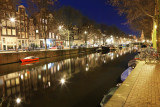
In a weekly blog the CTO Amsterdam presents technical and social innovation in the field of energy. By collecting new solutions we want to accelerate the energy transition in Amsterdam. We ask three questions: what is it, how does it contribute to the energy transition of Amsterdam and what is needed to implement the solution?
In een wekelijkse blog presenteert CTO Amsterdam technische en sociale innovatie op het gebied van energie. Door nieuwe oplossingen te verzamelen willen we de energietransitie in Amsterdam versnellen. We stellen drie vragen: wat is het, hoe draagt het bij aan de energietransitie van Amsterdam en wat is er nodig om de oplossing te implementeren?
CODALoop Amsterdam
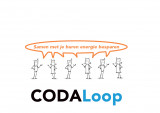
CODALoop is a EU-funded research project and a joint venture of different academic and non-academic partners in three countries, The Netherlands, Austria and Turkey and four cities, Amsterdam, Graz, Leibnitz and Istanbul. CODALoop Amsterdam is active in two neighborhoods, the Indische Buurt and Buiksloterham.
There is a tremendous urgency to reduce energy consumption to guarantee quality of life for future generations. In the light of the weak results of behavioral approaches and top-down investments on infrastructures for energy efficiency, such as grid management, smart meters and the like, innovative approaches to tackle this issue are required. CODALoop Amsterdam is a research project which uses a sociological approach and explores the extent to which social interactions, at the level of the neighborhood, are able to activate ‘energy consciousness’.
Energiek Amstelveen
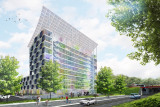
135 apartments 15 offices and 1 vegetarion restaurant all energy positive year around no fossil
Fuel used all with solar and wind energy including 5 mwh battery storage and 175 electric cars all connected in vehicle 2 grid solution off-gas with rainwater collecting tank for toilet and other uses
Smart Urban Isle

The Smart Urban Isle (SUI) project pretends to move forward with the urban energy savings.
The Smart Urban Isle (SUI) project pretends to move forward with the urban energy savings. Based on a three cornerstones procedure, the SUI project aims at a whole new urban planning that allows cities to grow in a sustainable way. Consequently, we develop an innovative new concept for city planning, where cities are arranged and grow through small integrated areas. We will probe Smart Urban Isle as innovative basic energy unit in the Smart City.
Duurzaamheidsfonds Amsterdam
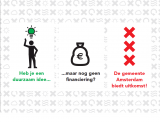
Matching great ideas with cheap loans
City-zen: Comfort Cooling residential buildings in Houthaven district

City-zen partners Westpoort Warmte and AEB have developed a plant which enables the use of cold from the adjacent river IJ for cooling of buildings in the Amsterdam Houthaven district.
City-zen was an international consortium, a program stimulating learning-by-doing in Grenoble and Amsterdam between March 2014 and November 2019. The results can be found in a booklet or in detailed reports. http://www.cityzen-smartcity.eu/home/reporting/deliverables/
City-zen: Smart cooling

Hot to cold, cold to hot
City-zen was an international consortium, a program stimulating learning-by-doing in Grenoble and Amsterdam between March 2014 and November 2019. The results can be found in a booklet or in detailed reports. http://www.cityzen-smartcity.eu/home/reporting/deliverables/
Partners
Smart Stories
Check the article about Smart Cooling in the blood bank featured in our online magazine 'Smart Stories':
City-zen: Retrofitting homes

On our way to become a natural gas free city, many residential buildings in Amsterdam need to be retrofitted. In City-zen the most ambitious ones were granted subsidy.
City-zen was an international consortium, a program stimulating learning-by-doing in Grenoble and Amsterdam between March 2014 and November 2019. The results can be found in a booklet or in detailed reports. http://www.cityzen-smartcity.eu/home/reporting/deliverables/
Read our interviews with some of the individual home-owners:
- Koos Marinus, who renovated his single family rowhouse
- Frank Hylkema, who made his houseboat energy friendly
- Jan Pel, who now has a sustainable apartment
- Marjolein Cazemier, who together with other 9 families, transformed a former schoolbuilding into family homes.
Learn more about some of the larger projects:
- How to make post war buildingssustainable?
- VIDEO: Wath this video (in Dutch) about how social housing company Eigen Haard renovated 138 apartments in the post war Airey Buildings in Amsterdam Nieuw-West with the support of City-zen funding:

Have a look at the MURMUR2 Campaign in City-zen city Grenoble and the work of the social landlords over there.
Stay up to date
Get notified about new updates, opportunities or events that match your interests.
